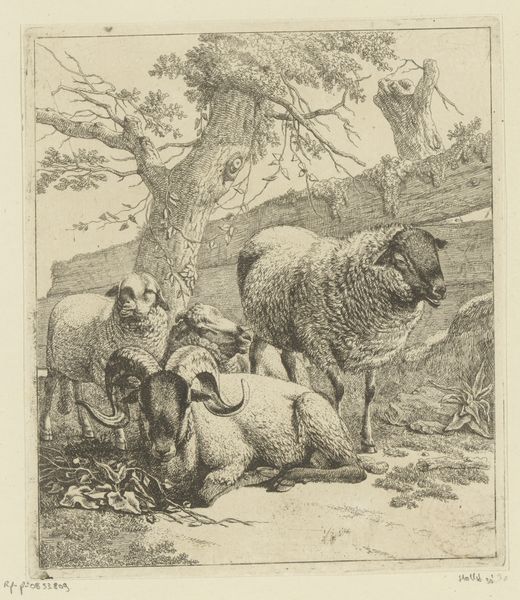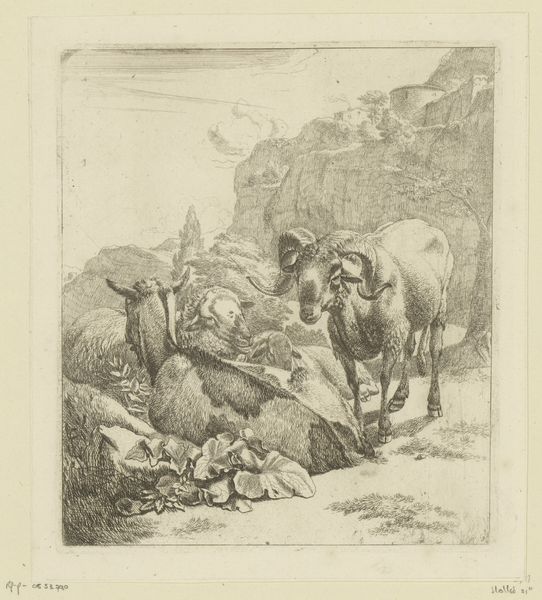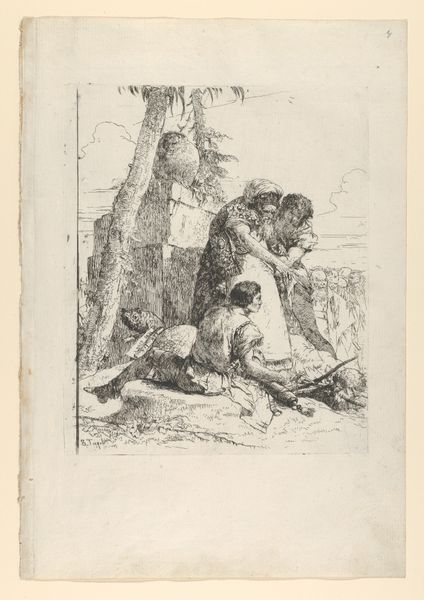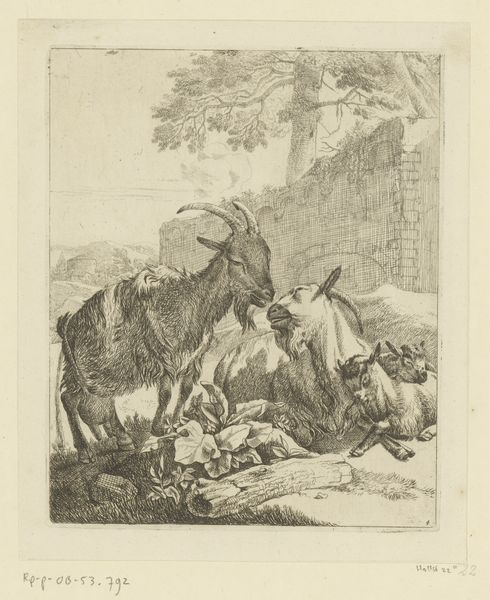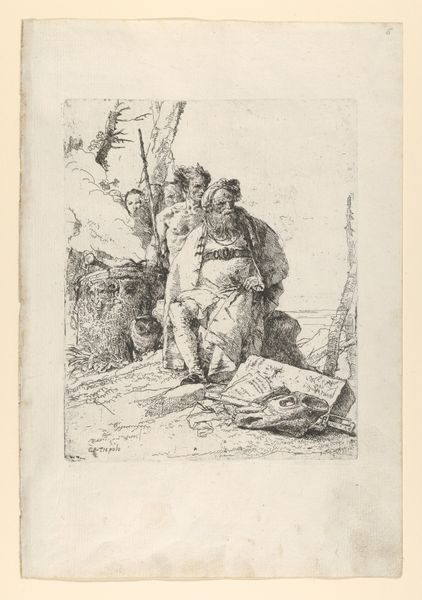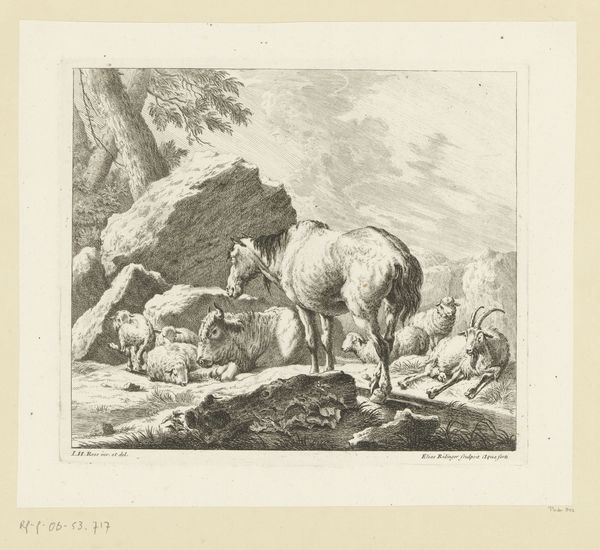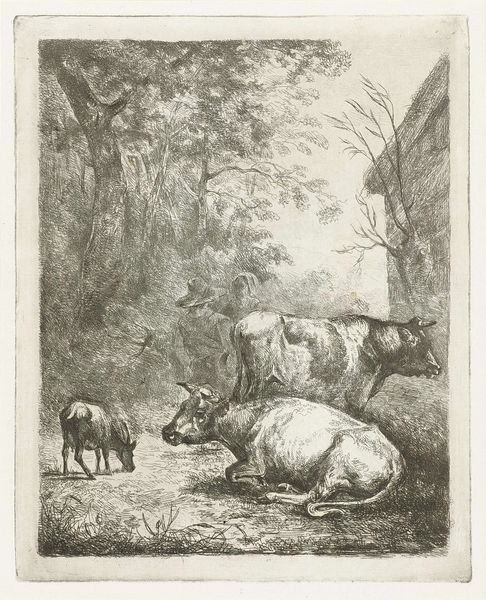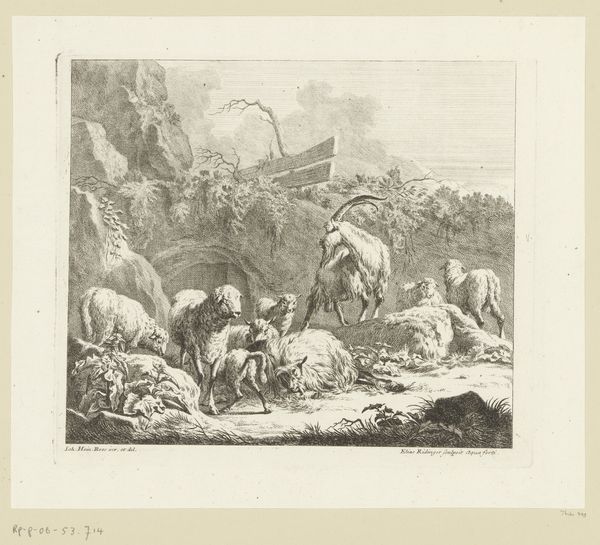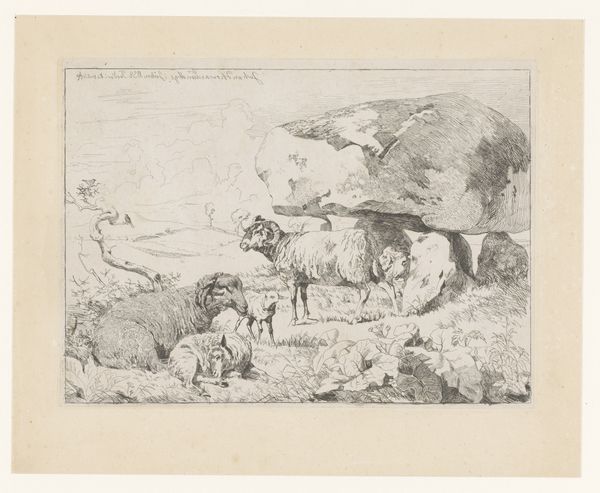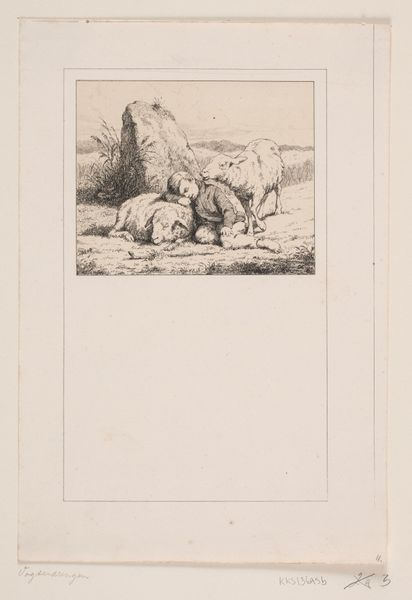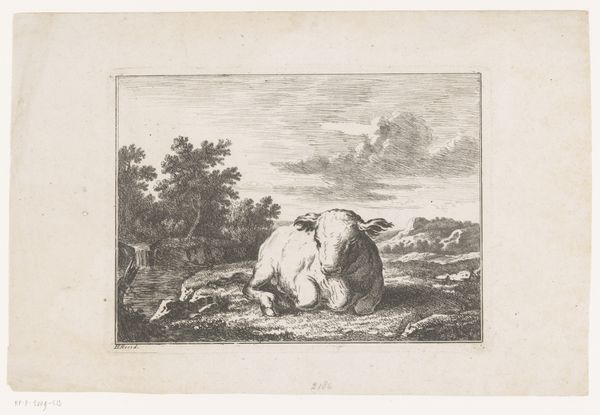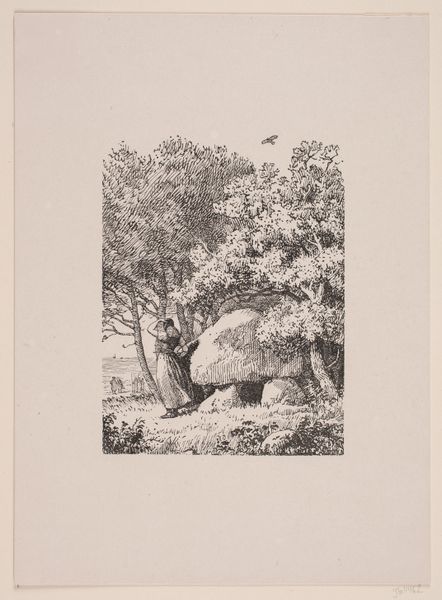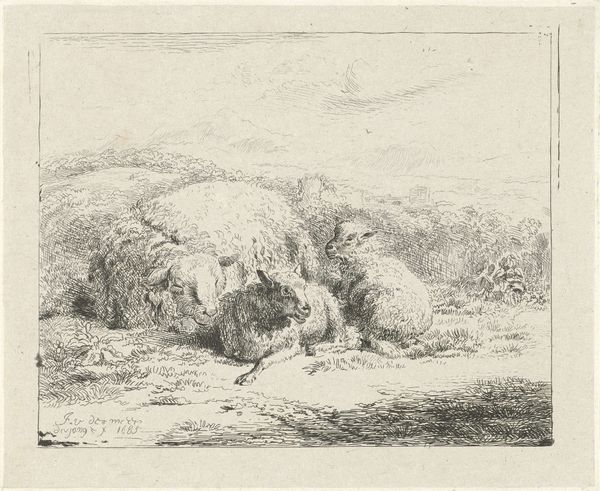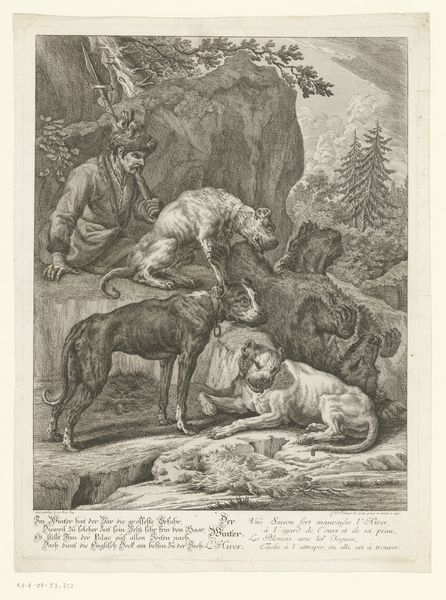
print, etching
#
baroque
#
animal
# print
#
etching
#
landscape
#
genre-painting
#
realism
Dimensions: height 198 mm, width 171 mm
Copyright: Rijks Museum: Open Domain
Editor: We're looking at "Standing Sheep and Three Lying Sheep," an etching by Johann Heinrich Roos from around 1668-1670, housed here at the Rijksmuseum. There's a real sense of calm in the image; the sheep seem undisturbed against this almost classical-looking landscape. What strikes you about it? Curator: It's interesting how Roos uses this pastoral scene, ostensibly simple, to engage with contemporary political ideals. Etchings like these became quite popular as collectibles amongst the rising merchant class in the Dutch Golden Age. Do you think that accessibility of imagery and themes might have something to do with its appeal to the bourgeoisie? Editor: That’s a great point. I guess I hadn’t really considered who would have been consuming images like these. What’s fascinating is that you see this idealized rural scene but understand it's actually deeply connected to the socio-political climate of the time. Curator: Exactly! The print allows access to rural themes but this imagery would only ever truly be passively available to them through their consumption. It speaks to their aspiration for a peaceful life, possibly distanced from the complexities of city life and political unrest, a constructed image they actively sought. Do you see how that resonates with how images circulate today? Editor: I definitely do. It's like social media today—everyone's curating their lives to create an idealized, but perhaps disconnected, narrative. Thank you. I’ve learned a great deal about how the artwork could have been passively accessible to that sector of society in its era, shaping societal needs and demands. Curator: My pleasure. Thinking about how art functions within the social sphere offers new lenses on otherwise straightforward images.
Comments
No comments
Be the first to comment and join the conversation on the ultimate creative platform.
